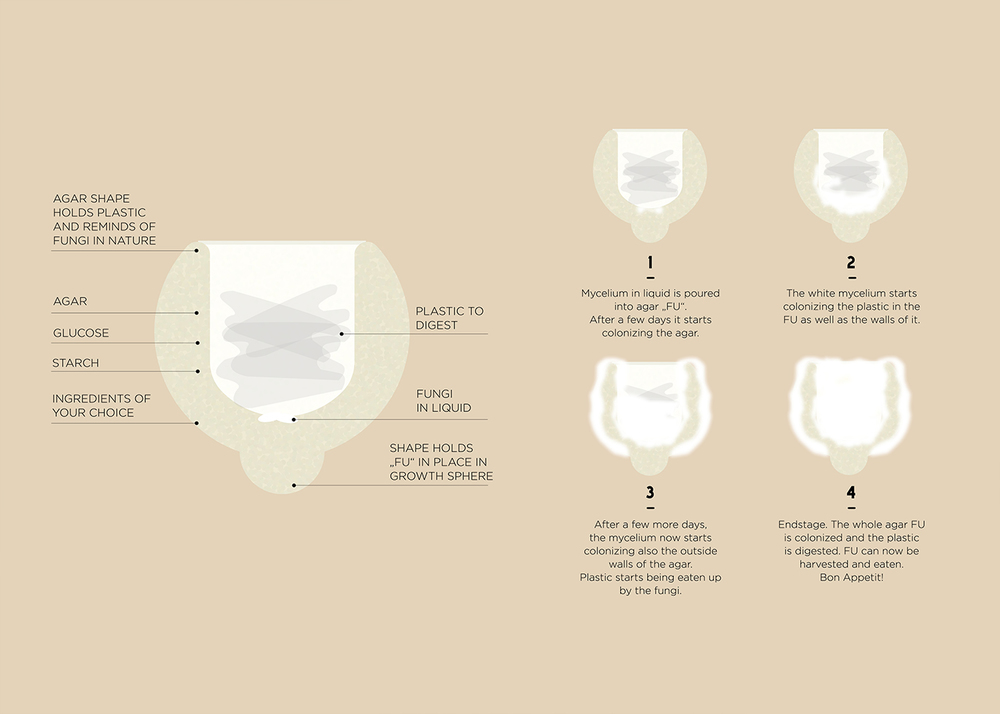Table of Contents
Have you ever heard of plastic eating mushrooms?
Congratulations if you have, you’re one step ahead of the general public!
Before we delve into the story of our heroic plastic eating mushrooms, we’d like to briefly touch on the plastic problem our earth faces today.
There is an unimaginable amount of plastic pollution circulating our world, the majority of which can be found in our oceans. According to Ocean Conservancy, “every year around 8 million metric tons of plastics enter our ocean on top of the estimated 150 million metric tons that currently circulate our marine environments.”
To put this in perspective for you, there are 500 times more pieces of plastic in our oceans than there are stars in the galaxy!

It is clear our green and blue planet is in dire straits of a total plastic overload, with plastic pollution killing over 100 million marine mammals a year!
What can we possibly do to mitigate the plastic pandemic?
Well, in 2012 students at Yale University discovered that a rare species of mushroom found in the Amazon rainforest is capable of subsisting on plastic alone.
The mushroom, named Pestalotiopsis microspora (someone really needs to find a more suitable name) can consume polyurethane, the main ingredient in plastic products, and convert it into organic matter.
As if this mushroom wasn’t cool enough, further studies conclude that Pestalotiopsis microspora can even survive without oxygen. This suggests incredible potential for feeding on, and thus cleaning up, landfills.
Enter Fungi Mutarium.

It turns out, there are many species of mushroom that will eat plastic, and some of them are even edible such as the oyster mushroom.
In 2014, inspired by plastic eating mushrooms like the oyster mushroom, designer Katharina Unger of Livin Studio in collaboration with the microbiology faculty at Utrecht University embarked on a project of their own. A project called Fungi Mutarium.
Their mission? – Develop edible mushrooms that eat plastic.
Don’t be confused by the picture above, although it looks like a mushroom, what you see is in fact agar molded into an egg-like shape. All that white fluff however, is indeed fungi.
“All mushrooms are fungi, but not all fungi are mushrooms.”
What is the difference between fungi and mushrooms?
Fungi is essentially the entire organism, consisting of the mycelium (roots) and the mushroom (fruit). However, some fungi do not ever produce fruiting bodies (such as bread molds).
To better understand what fungi is, imagine an apple tree. A mushroom would be equivalent to an apple, while not an organism on it’s own, but part of one. The entire tree would be the fungi, the entire organism. Therefore, all mushrooms are fungi, but not all fungi can produce mushrooms.
Okay, now that we understand the difference between mushrooms and fungi, let’s get back to Katharina’s project – Fungi Mutarium.
What is Fungi Mutarium?

Fungi Mutarium is a prototype design that grows edible fungal biomass, that subsists off of plastic and agar.
How do the plastic eating mushrooms work?
First, egg shaped agar’s are placed inisde the dome. Agar is a seaweed-based gelatin-substitute and acts, mixed with starch and sugar, as the perfect nutrient base for the fungi.
Katharina calls these egg-shaped agar’s FUs. Once inside the dome, these FUs are filled with plastic. Diluted fungi culture is then inserted into the FUs via a large glass pipette. The fungi digests the plastic and overgrows the whole substrate.


A step-by-step process
(The following 6 points were taken directly from the Livin Studios website)
1) Plastic is UV treated in the “Activation Cylinder” placed on the bottom of the mutarium. UV light sterilizes the plastic and activates the degradation process of the plastic which makes it easier accessible for the fungi.
2) Plain “FU” is placed in the mutarium´s Growth Sphere. This is done with pincers to work as sterile as possible.
3) UV-sterilized plastic is put into the “FU”, ready to be digested.
4) Macerate (fungi sprouts in liquid nutrient solution) are extracted with a pipette from the Fungi Nursery.
5) Extracted macerate is dropped into the “FUs” to ignite the growing process.
6) After a couple of weeks, the ready-grown “FU” can be taken out to be prepared and eaten.
In case the process is still somewhat unclear to you, check out this video below.
Final take away
The plastic can take several months before it is fully digested by the fungi. This part of the project is still undergoing a ton of research. Unger says: “Our research partner (Utrecht University) expects that the digestion will go much quicker once processes are fully researched and optimised.”
Are plastic eating mushrooms our weapon against plastic pollution?
Not exactly, at least not yet anyway, but perhaps in the future they could be. However, if one thing is certain, it is that technological innovations such as Fungi Mutarium are urgently needed, in order to address the critical issues of hunger and plastic waste that plague our planet today.
Oh, and in case you are still fascinated by the Oyster mushroom, we’ve sourced you 6 facts on this heroic fungi.
Some further reading

- The oyster mushroom is a saprotroph. In other words, it feeds on dead and decaying matter (mainly wood), but also plastic.
- They are found growing on hardwoods throughout the world.
- The mushroom caps or heads usually range between 5 to 25 cm (2 to 10 inches) and are shaped like a fan or low and behold an oyster. The mushroom can be white, yellow, brown, tan, or even pink.
- They have a distinct sweet liquorice-like scent.
- Their latin name Pleurotus ostreatus means “sideways oyster”.
- The roots of the mushroom will actually kill and eat nematodes (small roundworms) and bacteria, making them one of the few carnivorous mushrooms in the world.
